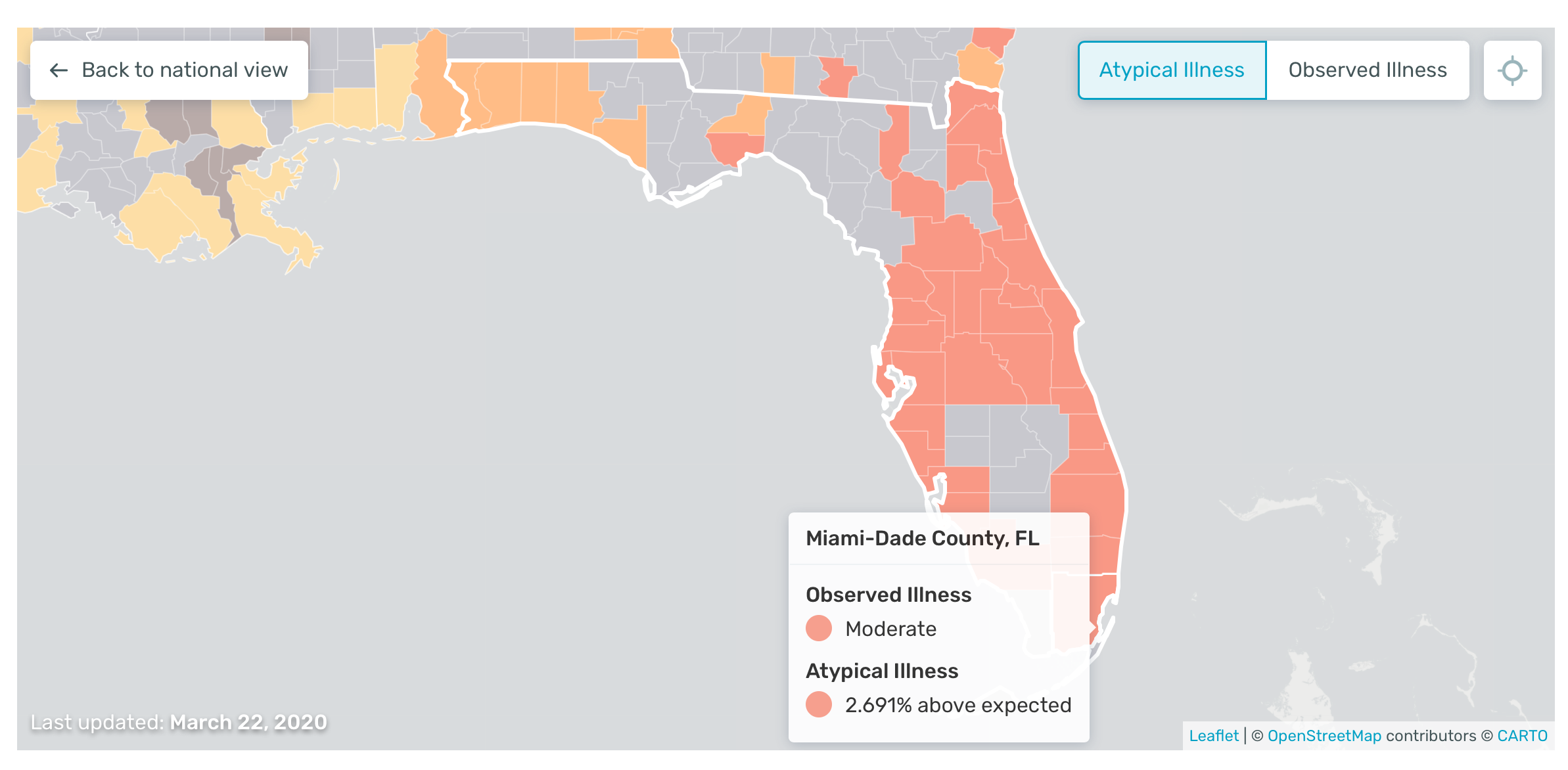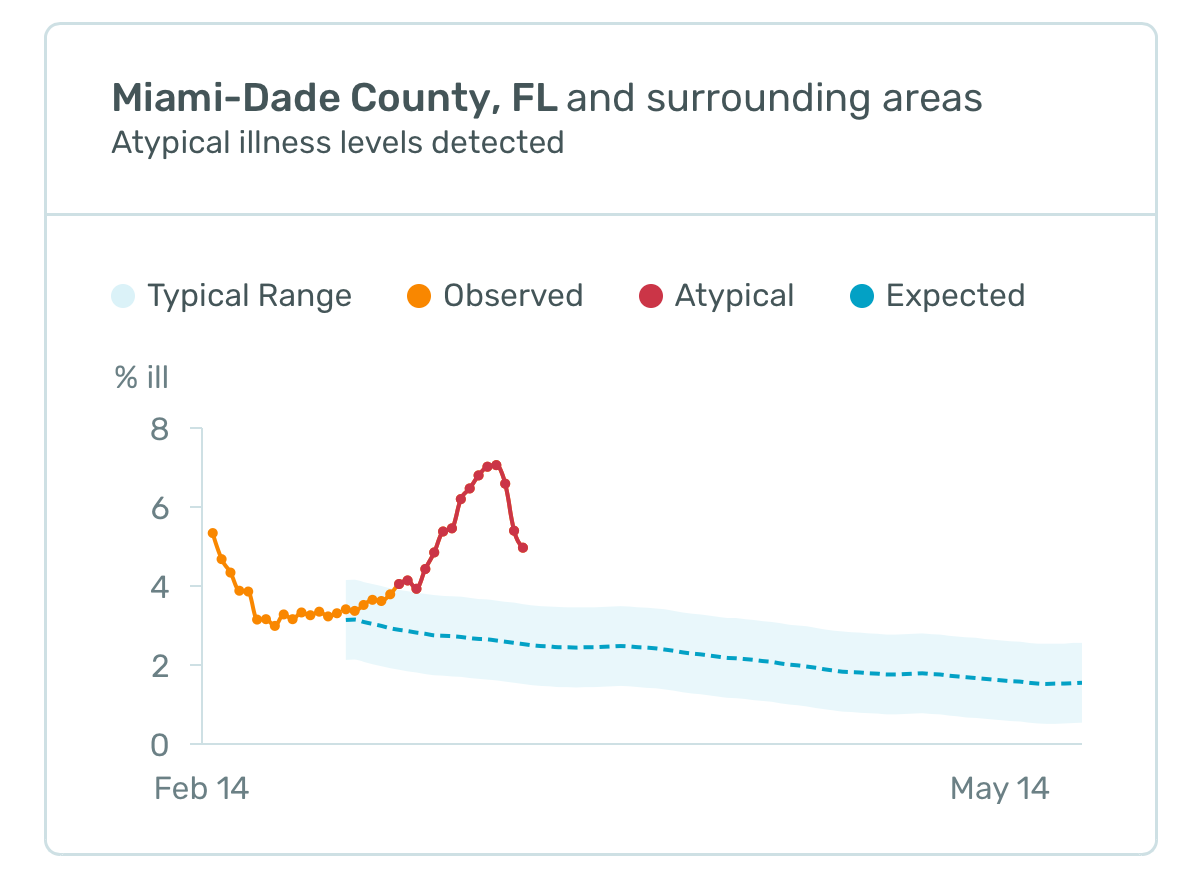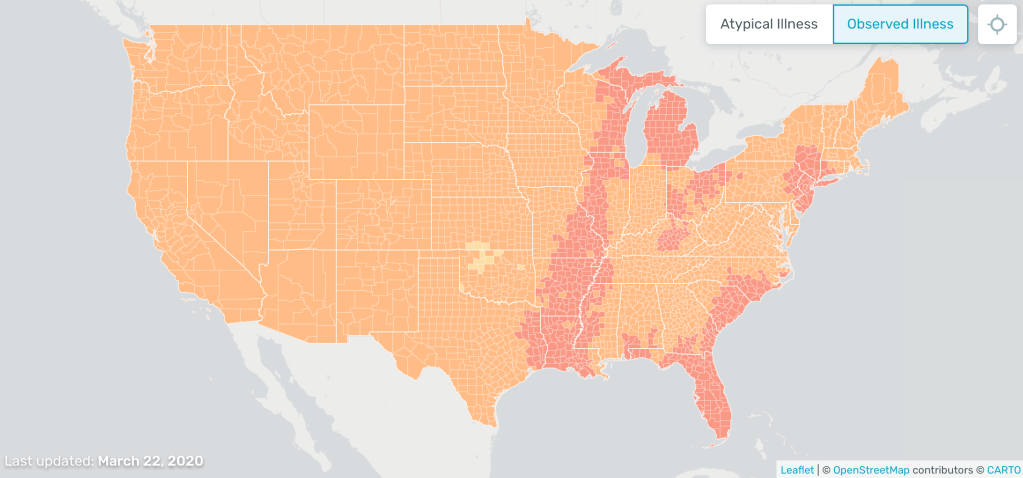Smart thermometer maker Kinsa has been working on building accurate, predictive models of how seasonal illnesses like the flu travel in and among communities — and its fever map is finding new utility as the novel coronavirus pandemic grows globally. While Kinsa’s US Health Weather Map has no way of tracking the spread of COVID-19 specifically, as it looks only at fevers tied to geographic data, it could provide easy-to-grasp early indicators of the positive effects of social distancing and isolation measures at the community level.
At the time that Kinsa’s health weather map was covered in the New York Times in February, the company had around a million thermometers in market in the U.S., but it had experienced a significant increase in order volume of as many as 10,000 units per day in the week prior to its publication. That means that the company’s analytics are based on a very large data set relative to the total U.S. population. Kinsa founder and CEO Inder Singh told me this allowed them to achieve an unprecedented level of accuracy and granularity in flu forecasting down to the community level, working in partnership with Oregon State University Assistant Professor Ben Dalziel.
“We showed that the core hypothesis for why I started the company is real — and the core hypothesis was you need real-time, medically accurate, geolocated data that’s taken from people who’ve just fallen ill to detect outbreaks and predict the spread of illness,” Singh said. “What we did with our data is we punched it into Ben’s existing, first-principle models on infectious disease spread. And we were able to show that on September 15, we could predict the entire rest of cold and flu season with hyper-accuracy in terms of the peaks and the valleys — all the way out to the rest of flu season, i.e. 20 weeks out on a hyperlocal basis.”
Prior to this, there have been efforts to track and predict flu transmission, but the “state-of-the-art” to date has been predictions at the national or multi-state level — even trends in individual states, let alone within communities, was out of reach. And in terms of lead time, the best achievable was essentially three weeks out, rather than multiple months, as is possible with Kinsa and Dalziel’s model.
Even without the extraordinary circumstances presented by the global COVID-19 pandemic, what Singh, Dalziel and Kinsa have been able to accomplish is a major step forward in tech-enabled seasonal illness tracking and mitigation. But Kinsa also turned on a feature of their health weather map called “atypical illness levels” a month ago, and that could prove an important leading indicator in shedding more light on the transmission of COVID-19 across the U.S. — and the impact of key mitigation strategies like social distancing.
“We’re taking our real-time illness signal, and we’re subtracting out the expectation,” Singh says, explaining how the new view works. “So what you’re left with is atypical illness. In other words, a cluster of fevers that you would not expect from normal cold and flu time. So, presumably, that is COVID-19; I cannot definitively say it’s COVID-19, but what I can say is that it’s an unusual outbreak. It could be an anomalous flu, a strain that’s totally unexpected. It could be something else, but at least a portion of that is almost certainly going to be COVID-19.”


In the example above, Singh says that the spike in fevers coincides with reports of Miami residents and tourists ignoring guidance around recommended distancing. The steep drop-off, however, follows after more extreme measures, including beach closures and other isolation tactics were adopted in the area. Singh says that they’re regularly seeing that areas where residents are ignoring social distancing best practices are seeing spikes, and that as soon as those are implemented, via lock-downs and other measures, within five days of those aggressive actions, you begin to see downward dips in the curve.
Kinsa’s data has the advantage of being real-time and continually updated by its users. That provides it with a time advantage over other indicators, like the results of increased testing programs for COVID-19, in terms of providing some indication of the more immediate effects of social distancing and isolation strategies. One of the criticisms that has appeared relative to these tactics is that the numbers continue to grow for confirmed cases — but experts expect those cases to grow as we expand the availability of testing and identify new cases of community transmission, even though social distancing is having a positive impact.
As Singh pointed out, Kinsa’s data is strictly about fever-range temperatures, not confirmed COVID-19 cases. But fever is a key and early symptom of COVID-19 in those who are symptomatic, and Kinsa’s existing work on predicting the prevalence of fevers related to cold and flu strongly indicate that what we’re looking at is in fact, at least to a significant degree, COVID-19 spread.
While some have balked at other discussions around using location data to track the spread of the outbreak, Singh says that they’re only interested in two things: geographic coordinates and temperature. They don’t want any personal identification details that they can tie to either of those signals, so it truly an anonymous aggregation project.
“There is no possible way to reverse engineer a geographic signal to an individual — it’s not possible to do it,” he told me. “This is the right equation to both protect people’s privacy and expose the data that society and communities need.”
For the purposes of tracking atypical illness, Kinsa isn’t currently able to get quite as granular as it is with its standard observed illness map, because it requires a higher degree of sophistication. But the company is eager to expand its data set with additional thermometers in the market. The Kinsa hardware is already out of stock everywhere, as are most health-related devices, but Singh says they’re pressing ahead with suppliers on sourcing more despite increased component costs across the board. Singh is also eager to work with other smart thermometer makers, either by inputting their data into his model, or by making the Kinsa app compatible with any Bluetooth thermometer that uses the standard connection interface for wireless thermometer hardware.
Currently, Kinsa is working on evolving the atypical illness view to include things like a visual indicator of how fast illness levels are dropping, and how fast they should be dropping in order to effectively break the chain of transmission, as a way to further help inform the public on the impact of their own choices and actions. Despite the widespread agreement by health agencies, researchers and medical professionals, advice to stay home and separated from others definitely presents a challenge for everyone — especially when the official numbers released daily are so dire. Kinsa’s tracker should provide a ray of hope, and a clear sign that each individual contribution matters.
































Comment